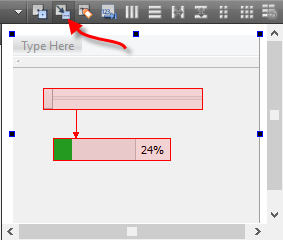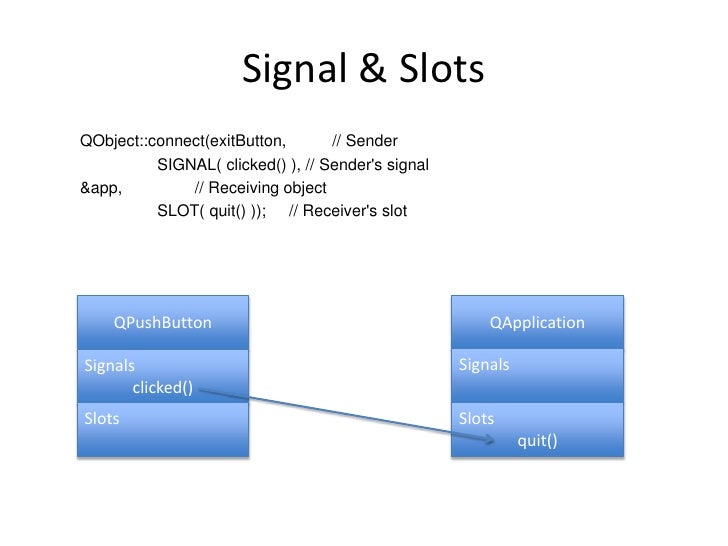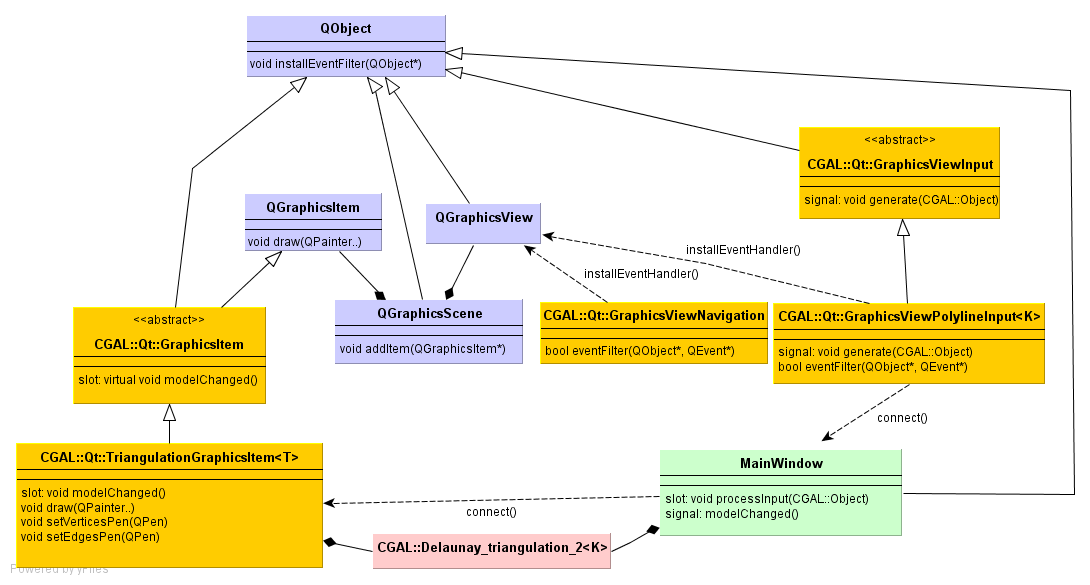Qt Slot Signal Tutorial
Disconnect follows the same syntax as connect so 'disconnect(A,signal,B,slot)' could be read as: A no longer signals B in the slot. B can stop suffering now. Emitting the signal: A emits the signal by calling emit, all objects whose slots have been connected to that type of signal will be, emmm signaled then: void ObjectADialog:: onpushButton. QtCore.SIGNAL and QtCore.SLOT macros allow Python to interface with Qt signal and slot delivery mechanisms. This is the old way of using signals and slots. The example below uses the well known clicked signal from a QPushButton. The connect method has a non python-friendly syntax. How Qt Signals and Slots WorkUnderstanding Signals and Slot in QtSignals and slotsC GUI with Qt Tutorial Searches related to qt signal and slotsqt signal a. A slot is a normal C method; it is called when a signal connected to it is emitted. Qt/C - Tutorial 073. Signals and slots. Connecting Slots to Overloaded Signals in the Qt5 Syntax. Fromage a fondue geant casino. Quite a frequent problem when working with signals with slots in Qt5, according to my observations on the forum, is the connection of. In this tutorial, we’ll show you how to handle signals and slots using Qt for Python. Signals and slots is a Qt feature that lets your graphical widgets communicate with other graphical widgets or your python code. Our application creates a button that logs the Button clicked, Hello! Message to the python console each time you click it.
Graphical applications (GUI) are event-driven, unlike console or terminal applications. A users action like clicks a button or selecting an item in a list is called an event.
If an event takes place, each PyQt5 widget can emit a signal. A signal does not execute any action, that is done by a slot.
Related course:
Create GUI Apps with PyQt5

Signals and slot introduction
Consider this example:

The button click (signal) is connected to the action (slot). In this example, the method slot_method will be called if the signal emits.
This principle of connecting slots methods or function to a widget, applies to all widgets,
or we can explicitly define the signal:
PyQt supports many type of signals, not just clicks.
Example
We can create a method (slot) that is connected to a widget. A slot is any callable function or method.
On running the application, we can click the button to execute the action (slot).
If you are new to programming Python PyQt, I highly recommend this book.
I am working on a small application which should run in console mode but uses QNetworkAccessManager. The main.cpp looks like this:
@#include <QtCore/QCoreApplication>
#include <QStringList>
#include <QTimer>
#include 'clientlogin.h'
int main(int argc, char *argv[])
{
QCoreApplication a(argc, argv);
}
@

and my pro file:
@#-------------------------------------------------
#-------------------------------------------------
QT += core network
QT -= gui
TARGET = enforceCaptcha
CONFIG += console
CONFIG -= app_bundle
Qt Slot Signal Tutorial Arduino

TEMPLATE = app
SOURCES += main.cpp
clientlogin.cpp
Qt Slot Signal Tutorial Android Studio
HEADERS +=
clientlogin.h
@
ClientLogin class is inherited from QObject.
Qt Signal Slot Performance
The issue is that when I start the application (with an email address) it prints out the debug message then nothing happens. I know it is a noob question, but is the signal-slot mechanism works in console mode? Or what else can be the issue?